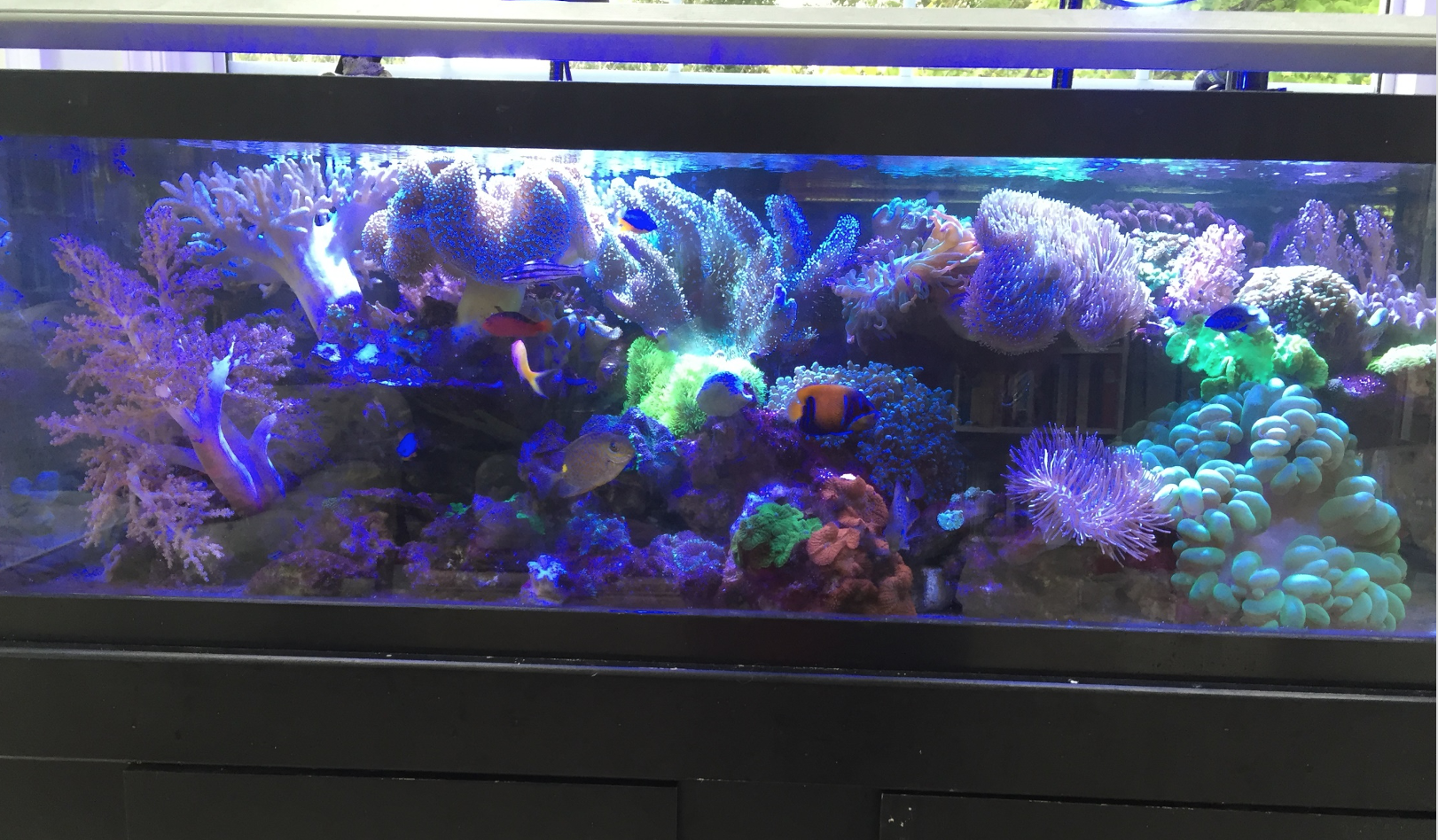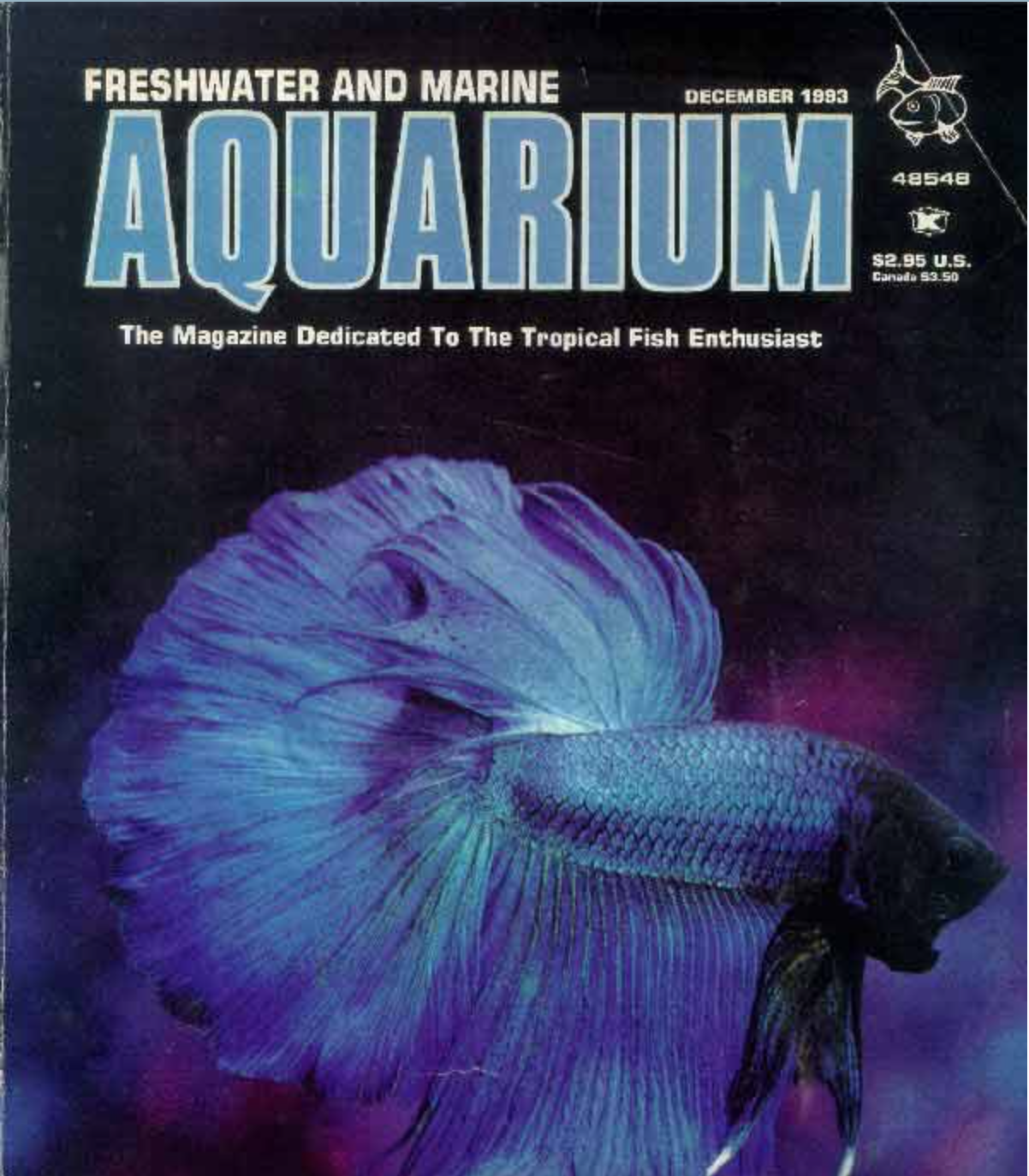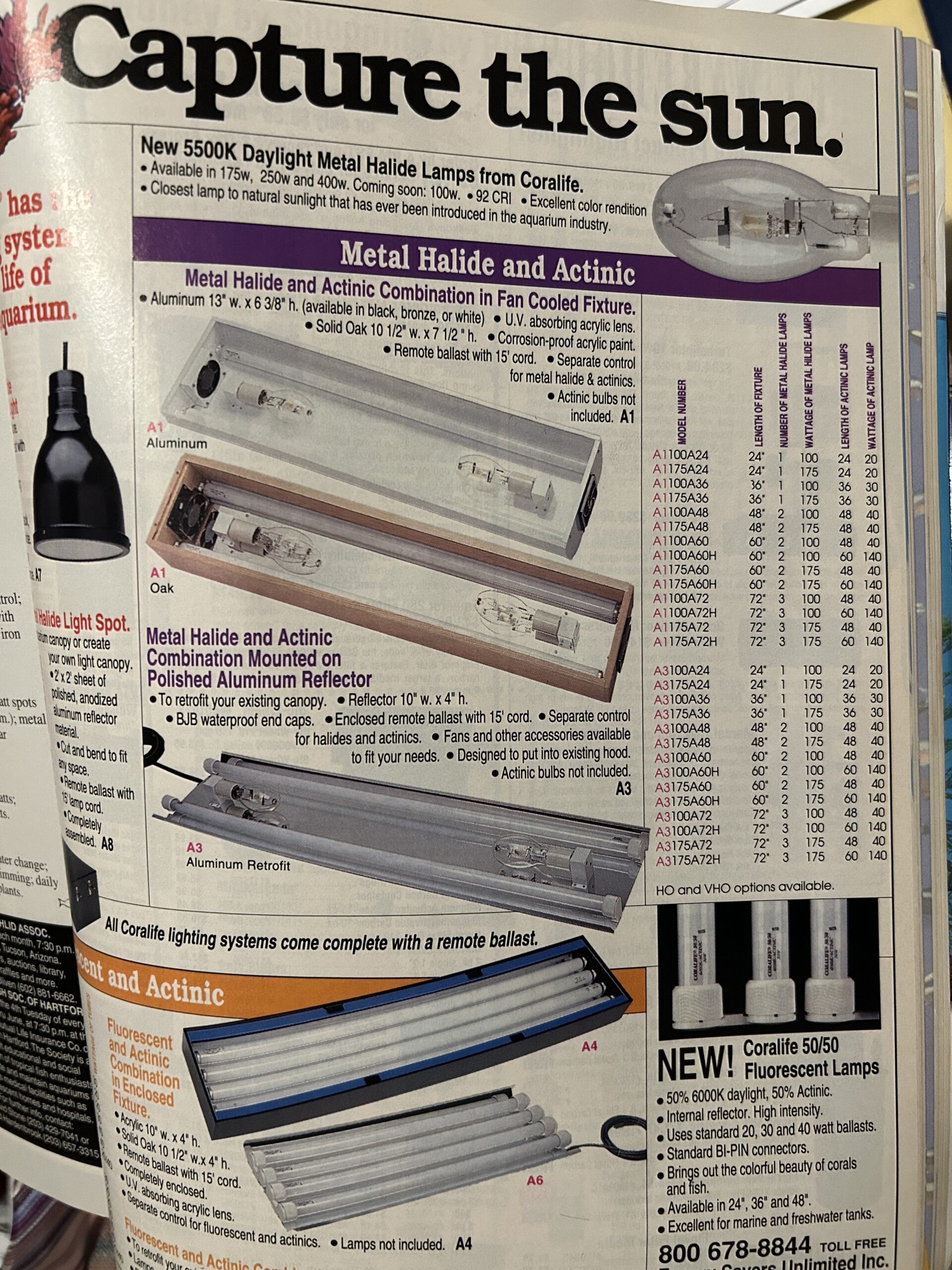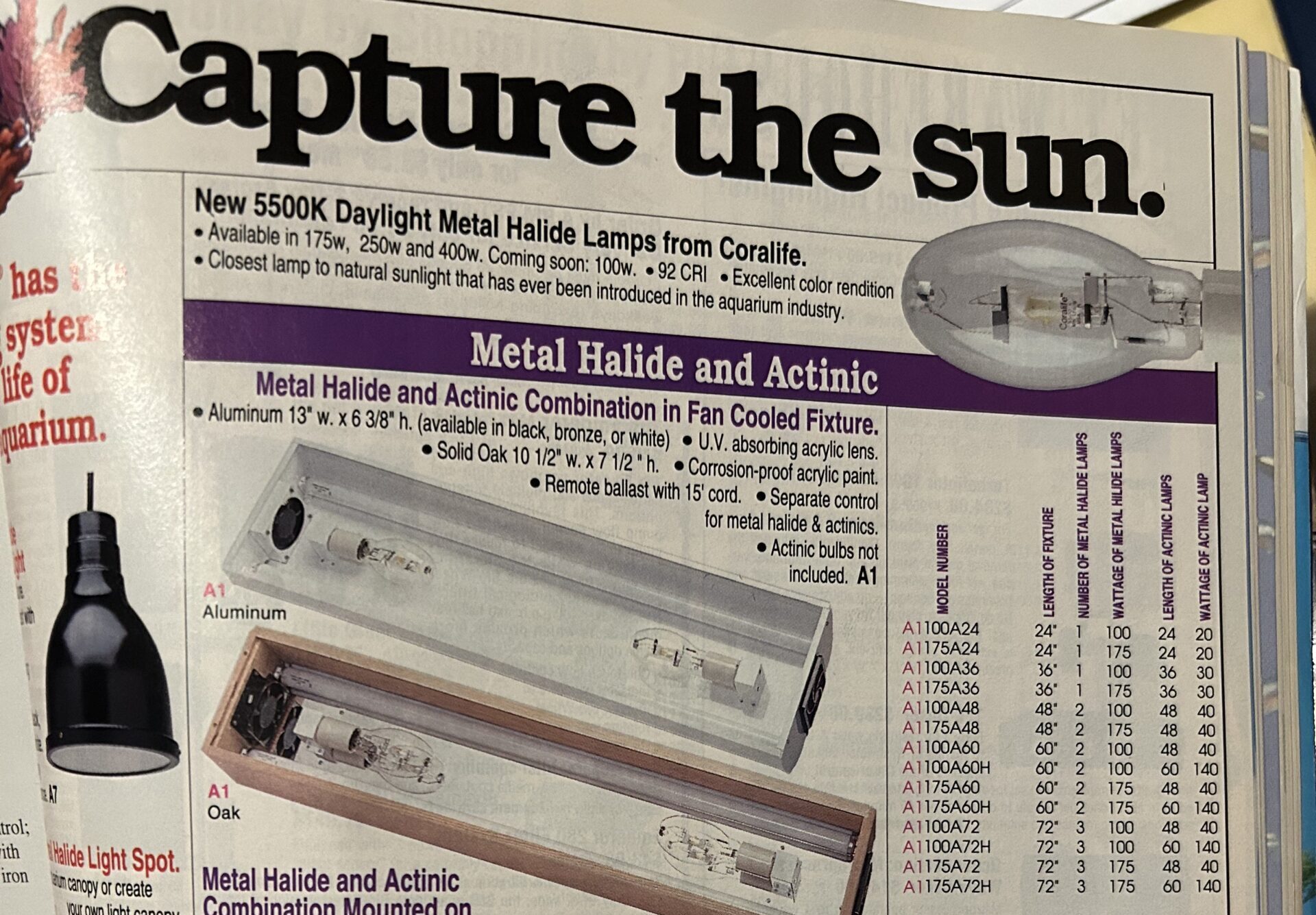Let’s face it, this hobby has never been an inexpensive one. Even during the early years of the hobby, it was expensive for a number of reasons. Corals and saltwater fish have always been more expensive than their freshwater counterparts. It requires more equipment than freshwater and uses more electricity, but the biggest expense of all is losing an expensive fish or coral and then having to replace it.
I still remember the first time over thirty years ago when I had to replace two $100 halide bulbs and almost had a heart attack at the price. But like most of us back then I bit the bullet and realized that was the price of doing business. Ten years ago or so I even saw an article on the ten most expensive hobbies and keeping a reef tank was on the list. So, for as long as I have been in the hobby it has been expensive to keep a reef tank.

However, recently it has become a frequent point of discussion that the hobby just might be getting too expensive for many, especially for new hobbyists just starting out. Now I agree that the price of some corals and fish is out of hand, and I’m not even going to discuss that here, that will be a future article, and that is more up to each hobbyist as they are free to spend what they like. I’m talking exclusively about the cost of equipment necessary to set up a reef tank when starting out.
Before addressing the current cost of equipment, I think it is necessary to address the rate of inflation and how much things cost now relative to what they cost say thirty years ago when the hobby was really just starting out. As a collector, my wife would say, hoarder, of old equipment and magazines I went back to 1992, roughly thirty years ago to look at what equipment cost then versus what it costs now and also look at the rate of inflation over those thirty years. I googled the rate of inflation over those thirty years so that there would be a baseline from which to work.

Overall, the total rate of inflation over those thirty years was 212% or 2.12. To explain this simply, it means that if you spent $100 for an item then it would cost $212 in 2023. Now this is the average rate of inflation overall, but I thought it might also be interesting to look at some of the common goods we purchase to see how they compare to this inflation rate.
For example an average car cost $16,871 in 1993 while the average price for a vehicle in 2023 is $48,008 for an inflation rate of 284%. Average rent was $447 and now it is $2,038 for an inflation rate of 455%. The price for a gallon of gas was $1.11 and now it is $386 for an inflation rate of 347%.
Obviously, the inflation rate for some items was significantly higher than the average rate of inflation. So maybe the income of most people increased to match this rate of inflation. The average salary in 1993 was $31,241 and now it is $56,940 for an increase of 182%. When evaluating this salary increase versus inflation it is easy to see that our average salaries have not increased to match the rate of inflation. For this reason alone, the hobby is more expensive now.

1993 Price match
While this is somewhat simplistic, a much better way to compare the cost of the hobby is to match the prices of items back in 1993 versus now. Fortunately, this was relatively easy to do since I have copies of FAMA and other magazines from which I could get the prices of things. And due to the internet, it is easy to get prices for comparable items today.
For comparison purposes, it was not possible to compare item for item, so I simply tried to make the items as comparable as possible. I also tried to pick items that I used then versus what I use now. While some will not agree with this methodology I thought at the very least that it would at least provide a reasonable comparison.
For example, for lighting back then a metal halide probably would have been used versus now LEDs so the cost for each is compared. With the halide, it would have been necessary to use a chiller, but that is not the case today, so this all went into the comparison. It should also be noted that much of the equipment used today is superior to what was used then and should have a corresponding higher price as a result, but that is not the goal of this exercise.

Lastly, while the price of the equipment back then is listed as well as today the inflation factor is also included to help with the comparison. Interestingly some of the items today are actually less expensive than they would be on an inflation-increased basis.
For this comparison, I chose a 90-gallon tank as, to me, that seemed reasonable, even though back in 1993 a 90-gallon tank was considered huge by most, and few hobbyists had tanks bigger than this. I tried to find the best prices for each item both back then and now, but I did not use sale prices or package discounts. I also did this evaluation blind, so I did not know how the total packages would compare and livestock was not included.
| Item | 1993 | Inflation Adjusted | 2023 |
| 90-gallon tank | $199 | $421 | $299 Marineland |
| Stand | $140 | $297 | $257 Petco |
| Overflow | $33 | $70 | $159 EShopps BRS |
| 40-gallon sump | $42 | $89 | $349 Waterbox |
| Protein Skimmer | $180 | $381 | $269 Reef Octopus |
| Lighting | $499 | $1,057 | $1900 Radion G6 |
| Return Pump Iwaki | $199 | $421 | $539 Vectra L2 |
| Heater 300W | $9 | $19 | $34 |
| 2 Powerheads | $74 | $156 | $850 2 x EcoTech MP40 |
| 75lbs of live rock | $150 | $318 | $675 Florida live rock |
| Salt | $40 | $85 | $100 Reef Crystals |
| RO/DI Unit | $250 | $530 | $249 |
| Hydrometer/Refractometer | $25 | $53 | $37 |
| Monitor | $399 | $845 | $599 Neptune |
| Test Kits (6) | $84 | $178 | $93 Salifert |
| Substrate | $40 | $85 | $57 live sand |
| Chiller | $499 | $1057 | $0 not necessary |
| Total | $2,862 | $6,062 | $6,466 |
After tallying the numbers and looking at the prices, both back in 1993, adjusted for inflation and the prices today I have to admit I am kind of shocked. I expected the differences in the cost for starting out would be substantially higher than it would be compared to the price for inflation, however as noted the cost for livestock is not included.
But when comparing these prices, the cost today is just 1.067% higher than it was in 1993 when adjusted for inflation. While some may disagree with the products chosen or some other selections, overall, the price for equipment, just the equipment to start a tank is not out of control. And again part of the reason why the cost may seem higher is that wage inflation has not kept up inflation for everything else.
When doing this comparison, a couple of things really stand out, first is that the cost for some items when adjusted for inflation are actually less than if they had followed the increase due to inflation. These include protein skimmers, RO/DI units, and monitors. And if you look at the cost of what items led to most of the cost increase then lighting, water movement, and the return pump stand out. But when looking at these items, particularly lighting and water movement, the products I’ve chosen are in my opinion superior to what was available 30 years ago.

Unlike halides, which I still use, these LEDs do not require a chiller nor do they require the bulbs to be changed every year to 18 months. So when comparing the two forms of lighting they appear comparable in price over time. With the powerheads, the difference is in terms of reliability and adding heat to the tank. My current MP40s are over 5 years old versus most of the powerheads I used in the 1990’s would only last for a year or two.
Also, the MP40s do not put heat into the tank as did the powerheads from the 90’s. But if these factors are not important then lesser-priced powerheads could be used today and this would bring the cost of starting a tank down to an even better price point compared to inflation-adjusted 1993.
As I noted, I was pleasantly shocked when the comparison was done, and the costs were compared. When starting this endeavor, I fully expected the cost of starting a tank today to be significantly higher than it was in the early 90’s. However, as I noted this analysis was done solely on hardware and not on livestock. I hope to do a similar analysis on livestock down the road and unfortunately, I do not think the comparison there will not be as favorable.
While the cost of this hobby, and especially of starting out, is not cheap, it has not gotten so out of hand that it is impossible to start out as I thought. Additionally, as many of us know, there are also ways to save money when starting out or adding a new tank. Since this hobby, at least to me and many of us, is so enjoyable and rewarding, it is my hope that the initial cost, while a bit higher than it was in 1993, will still be enough to draw in new hobbyists.



